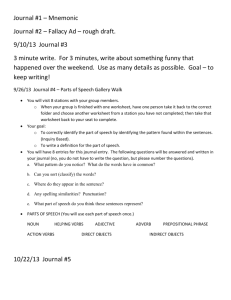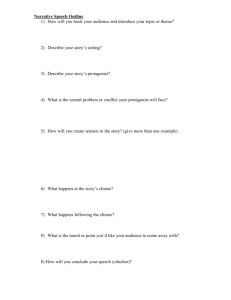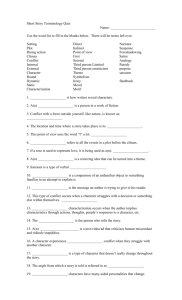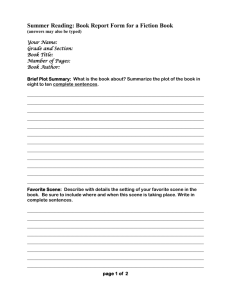Narrative Literary Terms
advertisement
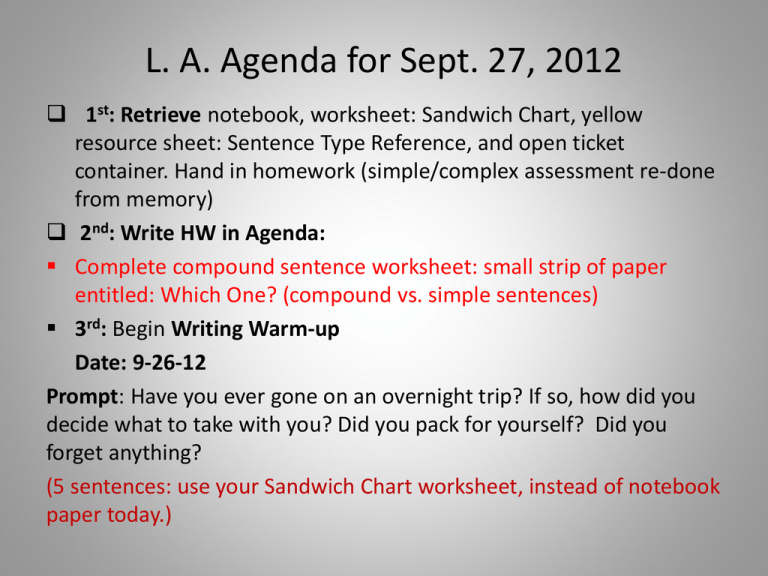
L. A. Agenda for Sept. 27, 2012 1st: Retrieve notebook, worksheet: Sandwich Chart, yellow resource sheet: Sentence Type Reference, and open ticket container. Hand in homework (simple/complex assessment re-done from memory) 2nd: Write HW in Agenda: Complete compound sentence worksheet: small strip of paper entitled: Which One? (compound vs. simple sentences) 3rd: Begin Writing Warm-up Date: 9-26-12 Prompt: Have you ever gone on an overnight trip? If so, how did you decide what to take with you? Did you pack for yourself? Did you forget anything? (5 sentences: use your Sandwich Chart worksheet, instead of notebook paper today.) L. A., 4th Period, Sept. 27, 2012 Opener: • Warm-up and read silently when finished. • Share written warm-ups and write good student sentences on white board next to sandwich. Lesson: • Review Compound Sentences through activity . •Introduce Complex sentences with activity manipulatives from Compound Sentence activity. •Practice Narrative Literary Terms – hand out equal number of flashcards (terms only) to each student. If they have the correct term to match the definition they win a ticket! Students may spend tickets at the end of the game! Closer: • Read aloud: I Never Saw Another Butterfly the author’s reason for writing purpose most important part of story when outcome of conflict revealed climax a character actually tells the story (clues used: I, me, my, etc.) first person point of view story sequence of events plot main character (usually most important one) protagonist somebody/ something that stays the same throughout the story static character the part of the writing that gives facts about setting and characters exposition author’s attitude toward subject matter (i.e. sarcastic, concerned, etc.) tone people/animals in the book, play, movie characters conflict between protagonist and outside force (i.e. man vs. man, man vs. society, or man vs. nature) external conflict scenes of events that happened in the past and occur out of order in the story flashback the way the writer portrays characters characterization plot events between conflict and climax rising action people whom the writing in intended for audience person or thing in a conflict with protagonist antagonist under developed and one dimensional flat character the way the author reveals the what the character is like through other characters actions, words, interaction indirect characterization well developed and multidimensional (usually the main character) round character the way the author actually tells what the character is like direct characterization character is wrestling with his conscience (man vs. himself) internal conflict the emotion the author creates through the details of the writing mood plot events following falling action (final outcome and closure provided) resolution hints of events which will occur later foreshadowing time (when?) and place (where?) setting reveals inner thoughts and feeling of many characters third person point of view omniscient central message from author theme plot events between climax and resolution falling action person/ animal changes throughout the story dynamic character reveals inner thoughts and feeling of characters third person point of view limited

